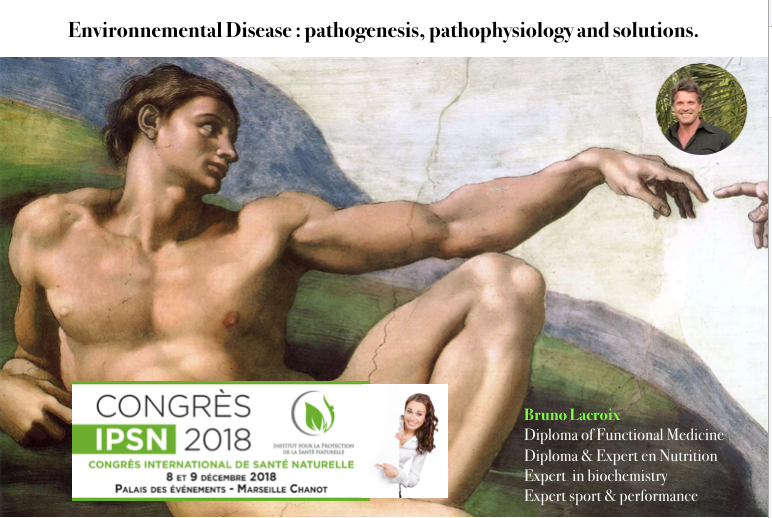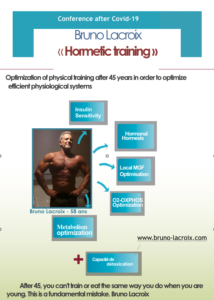
Hormetic Training
Each one his training method: nothing exceptional, but it suits me well from a physiological point of view with the age 🙂 – intense, short and very good at the cardiovascular level.
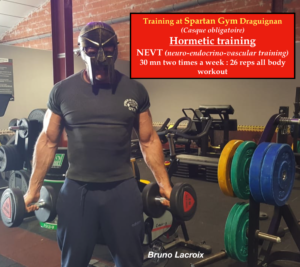
Infrared and health
The potential of nature is connected to our physiology, it only waits to be activated by our choices, we are too focused on food and less on circadian rhythms, light, water, electrons and magnetism . The connection with nature has this ability to greatly improve health: free of spirit, free of dogmas, all that is in nature is vibrations and frequencies
The Infrared cabin is one of the approaches that acts as an antidote to a deleterious magnetic environment by re-synchronizing the mitochondria through phosphorylation oxidation. Course of the conference: health system, deleterious environment, nutritional aspect, concept detox, concept vibration, concept light, Infrared & mitochondria, concept nervous system & brain, concept fitness- Wellness.
Boost the oxidation-reduction system is it the best way to regain health and detoxify well? The short infrared light wave reaches up to 5mm deep into the body tissues, the resonant vibration occurs when the light waves enter the cells and water molecules, this vibration reduces the ionic bonds of the cells, releasing toxins while energizing them
God, nature and Health
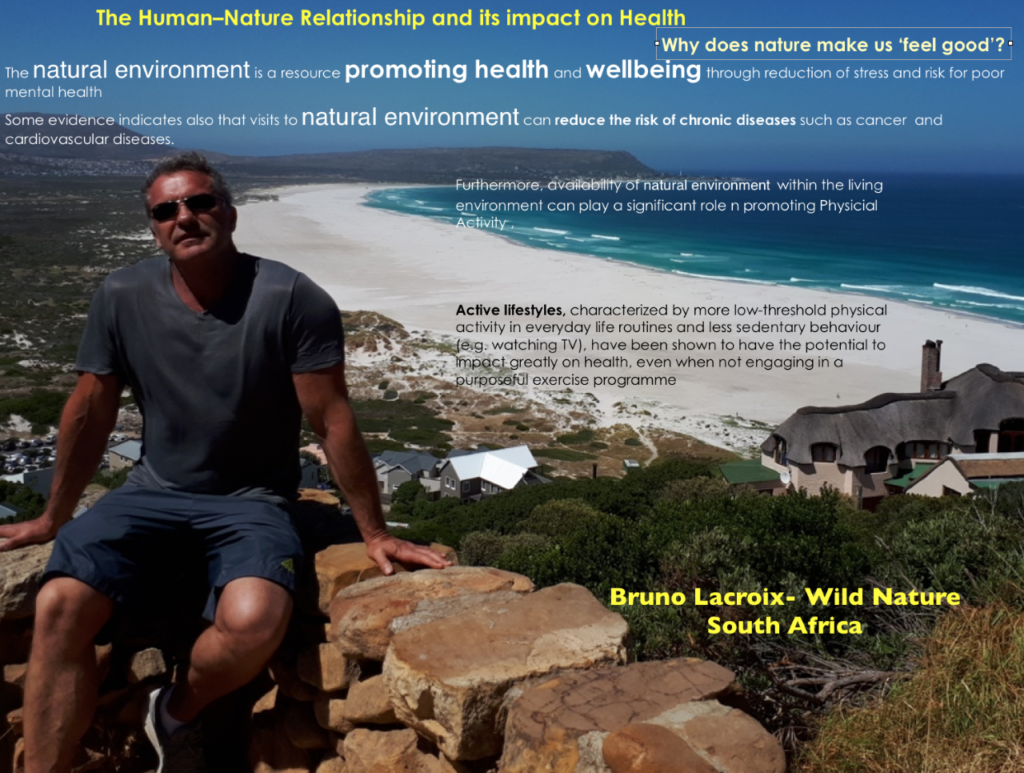
Prostate cancer detection- Be careful !
Dogmatic medicine always has « bias » and relying on it with confidence can be as dangerous as doing nothing at all …
Do not hesitate to consult 2 to 3 urologists when you suspect prostate cancer. For having studied the etiology of prostate cancer, which is a very exciting subject, I believe that prevention in humans is essential, especially after 50 years ….
Medical mistakes are the third cause of deaths in the USA (over 251,000 deaths a year, over one million deaths in 4 years) more then suicide, firearms and motor vehicle accidents combined 13. Per a consumer magazine: Each year 8.8 million hospital patients suffer from preventable harm and 440,000 hospital patients die from medical errors and hospital-acquired infections.
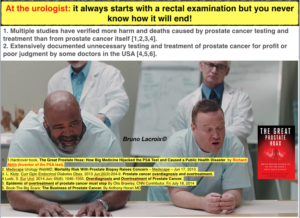
International Conference in Environnemental Disease
My brief approach of aging
 My experimental research about aging and metabolism – photo- 2018 for my 56 year’s
My experimental research about aging and metabolism – photo- 2018 for my 56 year’s
Boosting Métabolism (my personalized protocol via nutritional optimisation).
No special diet like : Keto diet, low carb, high protein,but microbiome diet optimisation….
Lower iinsulin/IGF-1.
Training exprimental : 30 mn of pump and pull up , Kettleball 2 times à week and walking 1 hourr a day
Reading spiritual book (Bible) : everything down here is ephemeral but man is programmed for eternity
When you think about CANCER…

An alternative theory of cancer as a metabolic disease was put forth by the Nobel Otto Warburg in the 1930s.
The principal proponent of this theory today is Thomas Seyfried of Boston College. Seyfried cites evidence that damage to the nuclear DNA, conventionally thought to be a root cause of cancer, is actually an effect of the damaged mitochondria and irregular metabolism. “The metabolic waste products of fermentation can destabilize the morphogenetic field of the tumor microenvironment thus contributing to inflammation, angiogenesis and progression.”
Damaged mitochondria can also cause cancer even when their DNA is intact, and Seyfried after Warburg makes a strong case that mitochondrial damage is the root cause of cancer.
Changes in mitochondria—the ‘powerhouse’ of the cell—have been observed in cancer for a long time, but researchers have found only recently that mitochondrial activity and cellular metabolism are linked to certain cancers. However, the mechanism by which genetic mutations alter mitochondrial activity and promote tumor growth was unknown.
Based on the findings in this study, the team is now considering the possibility of adding mitochondrial inhibitors into the therapeutic mix for patients in this trial.http://ref. Some well-known cancer drugs (Gleevec, Herceptin) already target the fermentation metabolism.
But might it be safer and more effective to starve cancer cells by cutting carbohydrates in the diet to zero?
Some study say « yes »[http://ref, http://ref,http://ref,, http://ref, http://ref, http://ref, http://ref,) but the results are not all positive
A search of http://clinicaltrials.gov/ yields 25 trials (http://ref )of ketogenic diet variants for cancer treatment. Most are in early stages, 5 have been completed, 2 have results. In this study (http://ref,) the ketogenic diet, with or without chemotherapy, did not cure glioma. This small study (http://ref ) found modest benefits in a variety of advanced cancers. These results are consistent with many mouse studies, in which some benefit was recorded from the ketogenic diet, but not a dramatic difference. The most encouraging results I have found was a study( http://ref )in which 9 of 11 mice treated with a combination of radiation and a ketogenic diet were cured of brain cancer. Clearly, this is no miracle cure, but it’s too early to give up–we’re just figuring out how to make the diet work, and it has not yet been tried except at late stages, after all else has failed.
There are a better option in the context of Nutrtion than Ketogenic diet, that explain in future conference
But the most important : When you think about CANCER you need to think about PREVENTION
Epigenetic Modulation

There has been a rapid decline in human health worldwide…
One of the biggest secrets in my physicians conferences about the pathophysiology of chronic modern disease is not only the traitement fix for patients, but also (and primarily!) address the environment in which our patients illness exists.
The primary driver of chronic disease is the interaction among genes, activities of daily living (lifestyle), and the environment
It is more important to know what person has the disease than which disease the person has. —William Osler
This allows us to practice epigenetic modulation
Epigenetic Modulation
| Epi- is a prefix taken from the Greek that means “upon, at, by, near, over, on top of, toward, against, among.” Epi-genetics are the factors that bathe the genes and prompt them to express negatively or positively. This contributes to all known dysfunctions.
Epigenetics are how we influence the genetic and cellular expressions that manifest as signs, symptoms and disease states by modifying factors like diet, lifestyle,and biological function (or how the body performs its many jobs). These habit changes that each and every patient can make—especially with your help and know-how—result in clinical remedies. Epigenetic Modulation: Having the skills to guide your patient in such a way that all controllable health factors are addressed. When you help them take charge of their internal and external environments, you catapult their health, |
One is the fondation of any healing protocol. It’s based on the principle of root cause resolution that states you must first remove obstacles to cure.
All conditions exist in an environment. When you shift the environment, the symptoms shift, the roots get dismantled and the diagnosis may even disappear.
For exemple, one of my second strategy to be healthy is nutrition :
Research is now showing that simply paying better attention to what you eat is a key factor in whether you’ll lose fat, get lean, and improve your health, but never forget is not enough…..lifestyle, exercice and environnement is also important
Creating a solid nutritional infrastructure -, that allows for healing to occur is very crucial. Deficiencies can be in key nutrients (macro, micro and even phyto), but also in biological factorssuch as secretions, hormones, neurotransmitters, types of white blood cells, and even barrier functions. Deficiencies may also be in microbial diversity or imbalanced terrain.
There are some Personalized Non-Negotiables factors for anyone who just isn’t feeling well. ((more nflammatory foods, high histamine foods, hard to digest proteins—all based on the singular needs of the individual, not on any one set protocol). They may also include habits and routinessuch as a set bedtime, meditation, ample hydration, community connection, and more.
I simply don’t fall into a single « diet camp » : Paleo, low carb, Ketosis, Intemittent fasting….. And that confuses the hell out of people, since the human brain likes easy categorization.
I don’t believe there’s a single, absolutely, positively, without-a-doubt best diet for every person to follow, always, and forever.
Dysfunctional patterns in the body can be set in motion from any number of events and usually from more than one—meaning they’re multifactorial (ie. not due to just one factor, but instead many factors).
This approach is essentially patient centered, rather than disease centered. A structure is presented for uniting a patient-centered approach to diagnosis and treatment with the fruits of modern clinical science (which evolved primarily to serve the prevailing model of disease-centered care).
The core scientific concepts of disease pathogenesis are antecedents, triggers, and mediators.

Antecedents are factors, genetic or acquired, that predispose to illness; triggers are factors that provoke the symptoms and signs of illness; and mediators are factors, biochemical or psychosocial, that contribute to patho- logical changes and dysfunctional responses.
Under-standing the antecedents, triggers, and mediators that underlie illness or dysfunction in each patient permits therapy to be targeted to the needs of the individual. T
he conventional diagnosis assigned to the patient may be of value in identifying plausible antecedents, triggers or mediators for each patient, but is not adequate by itself for the designing of patient-centered care.
Applying the model of person-centered diagnosis to patients facilitates the recognition of disturbances that are common in people with chronic illness.
Diet, nutrition, and exposure to environmental toxins play central roles because they may predispose to illness, provoke symptoms, and modulate the activity of biochemical mediators through a complex and diverse set of mechanisms.

